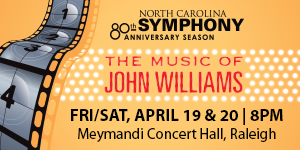This preview has been provided by Carolina Pro Musica.
Carolina Pro Musica presents The Pilgrims’ Way a program of music from 13th and 14th century Spain. This music has fascinated the ensemble for many years with its interesting stories, languages and cultures.
In the 11th – 14th centuries many Christians embarked upon journeys, both physically challenging and spiritually rewarding, to see the holy relics preserved in monasteries and churches throughout Europe. The Pilgrimage route crossed France, to Santiago de Compostela in Spain, to Rome and even on to Jerusalem to the Church of the Holy Sepulcher and the Church of the Nativity in Bethlehem. Pilgrims sought inspiration for their faith, remission for their sins, healing for their bodies and sometimes satisfaction for their desire to be part of an adventure.
During the reign of Alfonso X (the wise), King of Castille and Leon from 1221 – 1284, a beautifully illuminated manuscript entitled “Cantigas de Santa Maria,” dedicated to the Virgin Mary, was compiled. Commissioned by the king and to which he contributed pieces, it contains 420 poems, made up of 357 miracle narratives and 63 loores (praises) and festas. Reflecting the cultures that were in the area over the years, some songs have a Moorish flavor. Miracle songs tell how the Virgin saved and comforted those in need. The manuscripts have survived in four codices: two at El Escorial, one at Madrid’s National Library, and one in Florence, Italy.
Thirty miles from Barcelona, the Benedictine monastery dedicated to the Black Virgin — ”La Moreneta” sits on the mountain named Montserrat (serrated mountain). Pilgrims have traveled to this rugged site to venerate the image of the Virgin since the monastery was founded in 1027. In the early 13th century the monastery included a library and choir school and was a center of learning in Catalonia. In 1399 a collection of 10 songs and dances written for the pilgrims holding night vigils in the church, was compiled and stored in the library. This music is primarily in Latin and was undoubtedly put together by monks of the monastery as it is in chant notation. In the 19th century it received a red velvet cover and its name “the red book.” It was only by chance that the book was out on loan when Napoleon’s army burned the library, destroying many treasures.
Carolina Pro Musica’s performances will include selected praise and miracle cantigas and the entire Llibre Vermell. Join us as we continue our journey in understanding this music.
Holly Wright Maurer and Karen Hite Jacob












